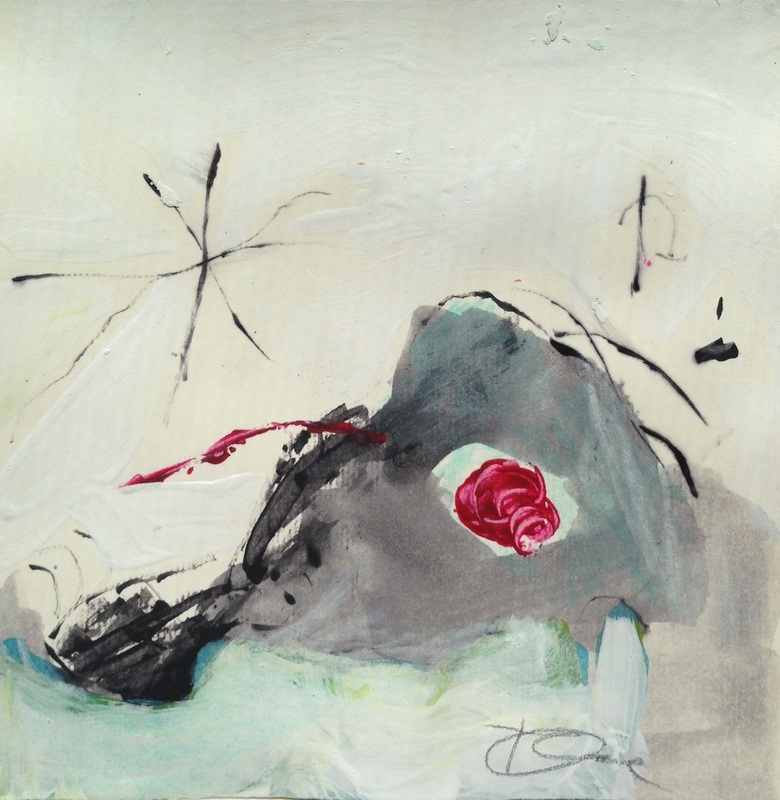|
Flight of the Sparrow: Cheeps from the hedges
India ink, pastels, white out on paper 4"x4" The Great Sparrow Campaign also known as the Kill a Sparrow Campaign, and officially, the Four Pests Campaign was one of the first actions taken in the Great Leap Forward from 1958 to 1962. The four pests to be eliminated were rats, flies, mosquitoes, and sparrows. The extermination of the last upset the ecological balance, and enabled crop-eating insects to proliferate. The campaign against the 'Four Pests' was initiated in 1958 as a hygiene campaign by Mao Zedong, who identified the need to exterminate mosquitoes, flies, rats, and sparrows. Sparrows – mainly the Eurasian tree sparrow– were included on the list because they ate grain seeds, robbing the people of the fruits of their labour. The masses of China were mobilized to eradicate the birds, and citizens took to banging pots and pans or beating drums to scare the birds from landing, forcing them to fly until they fell from the sky in exhaustion. Sparrow nests were torn down, eggs were broken, and nestlings were killed. Sparrows and other birds were shot down from the sky, resulting in the near-extinction of the birds in China. Non-material rewards and recognition were offered to schools, work units and government agencies in accordance with the volume of pests they had killed. By April 1960, Chinese leaders realized that sparrows ate a large amount of insects, as well as grains. Rather than being increased, rice yields after the campaign were substantially decreased. Mao ordered the end of the campaign against sparrows, replacing them with bed bugs in the ongoing campaign against the Four Pests. By this time, however, it was too late. With no sparrows to eat them, locust populations ballooned, swarming the country and compounding the ecological problems already caused by the Great Leap Forward, including widespread deforestation and misuse of poisons and pesticides. Ecological imbalance is credited with exacerbating the Great Chinese Famine, in which at least 20 million people died of starvation.
1 Comment
Elaine Jordan Bussè
3/8/2016 14:22:06
The Sparrows is an astonishing representation of the paragraphs on the war on the 4 pests in China. I was struck by the beauties in the painting; then I read the narrative and I wept.
Reply
Your comment will be posted after it is approved.
Leave a Reply. |
Deep ThoughtsThere is always something interesting, amusing, educational, or beautiful to ponder and explore. Archives
June 2024
Categories |

 RSS Feed
RSS Feed
